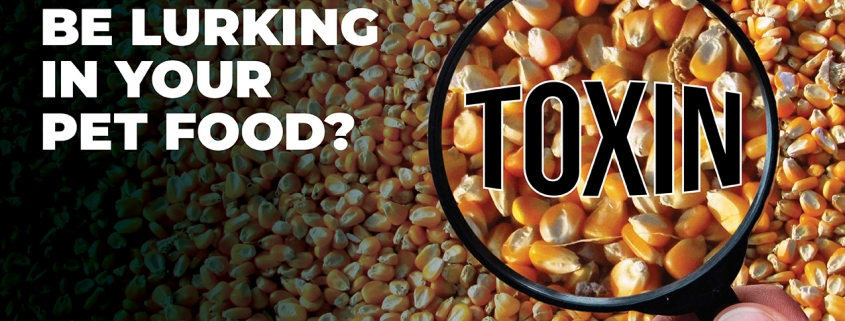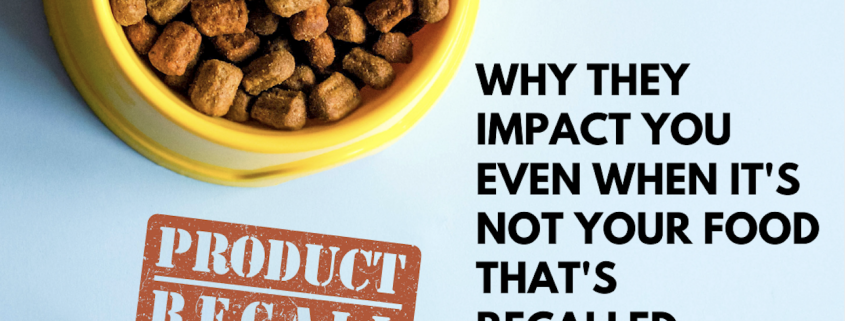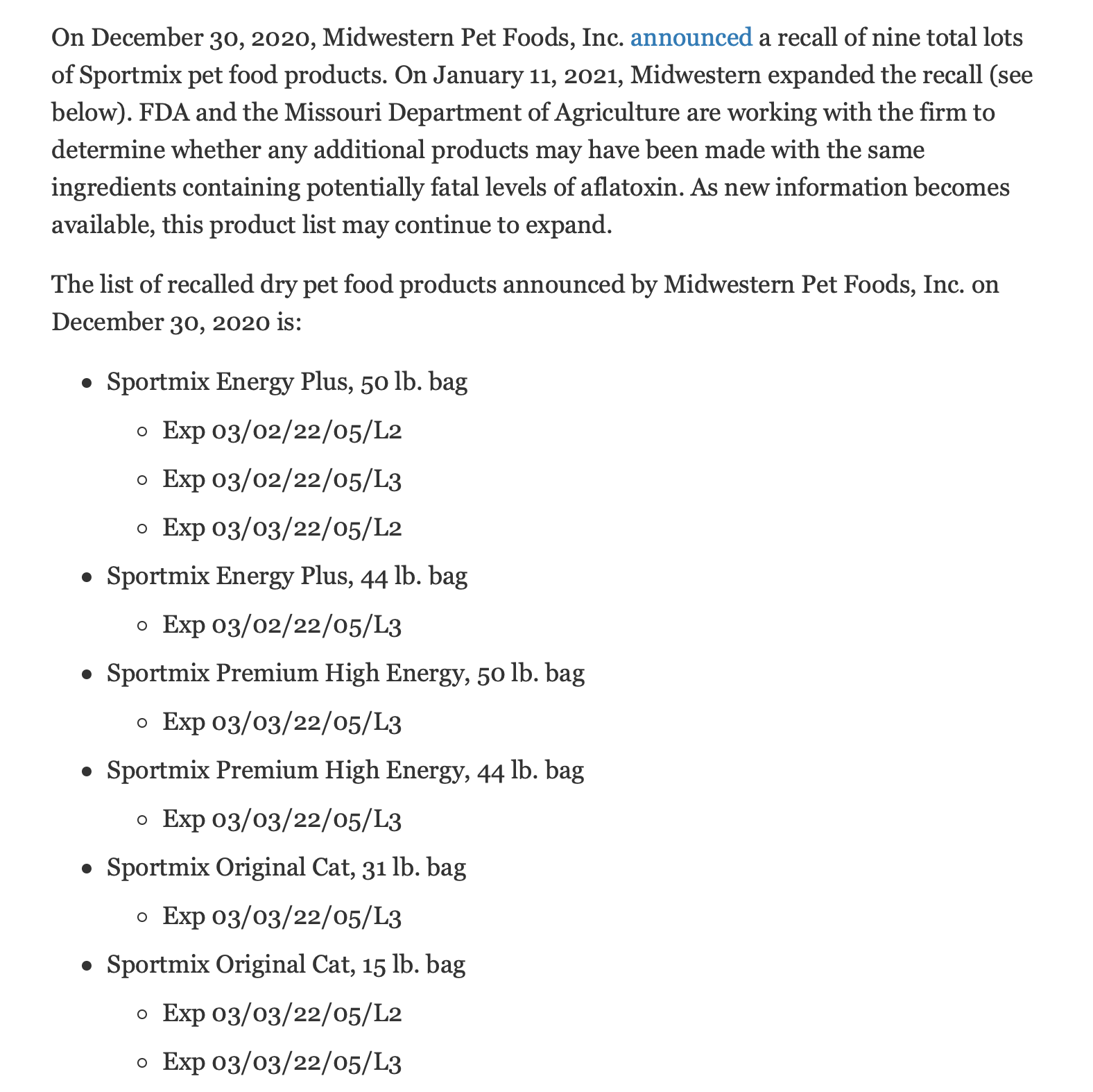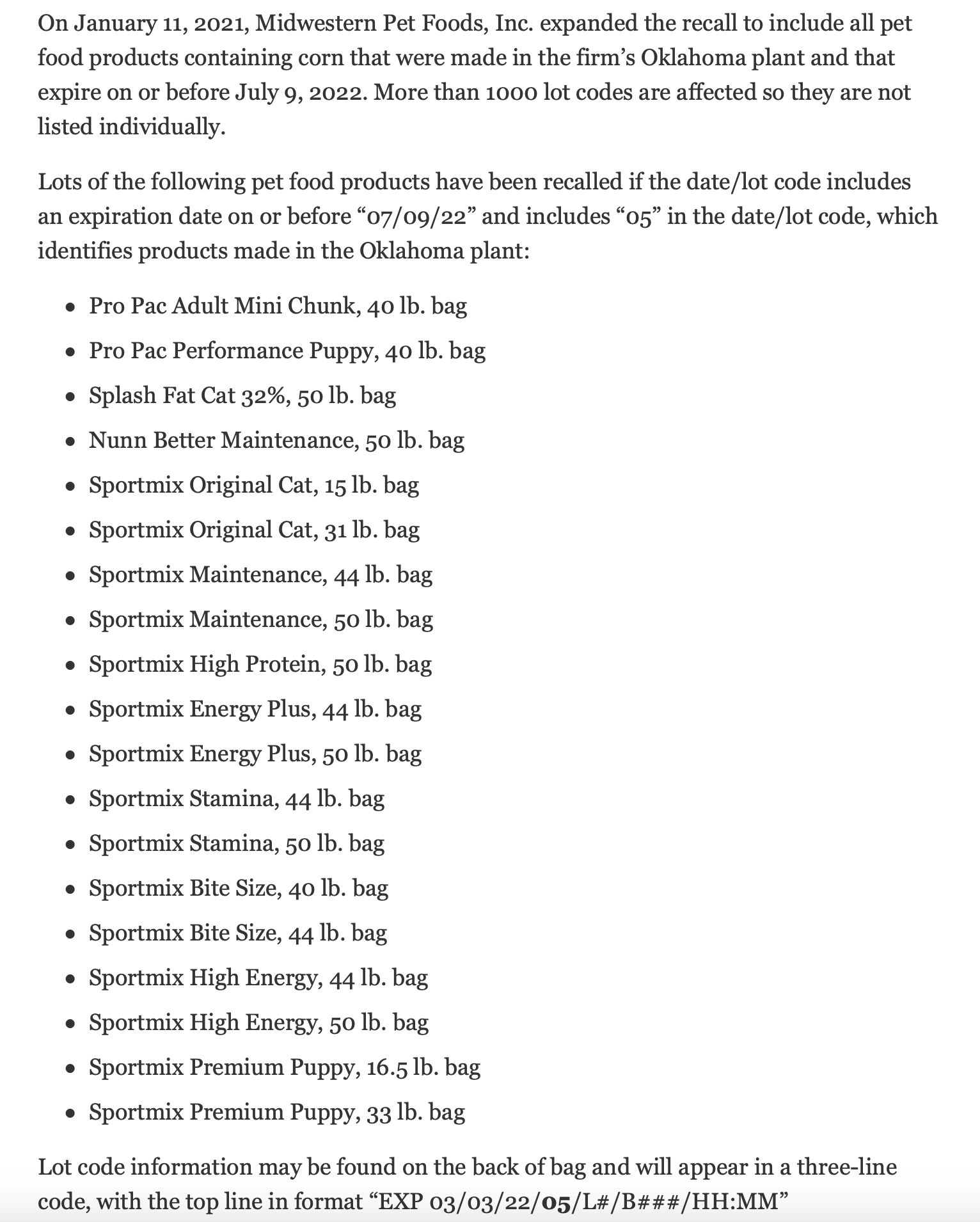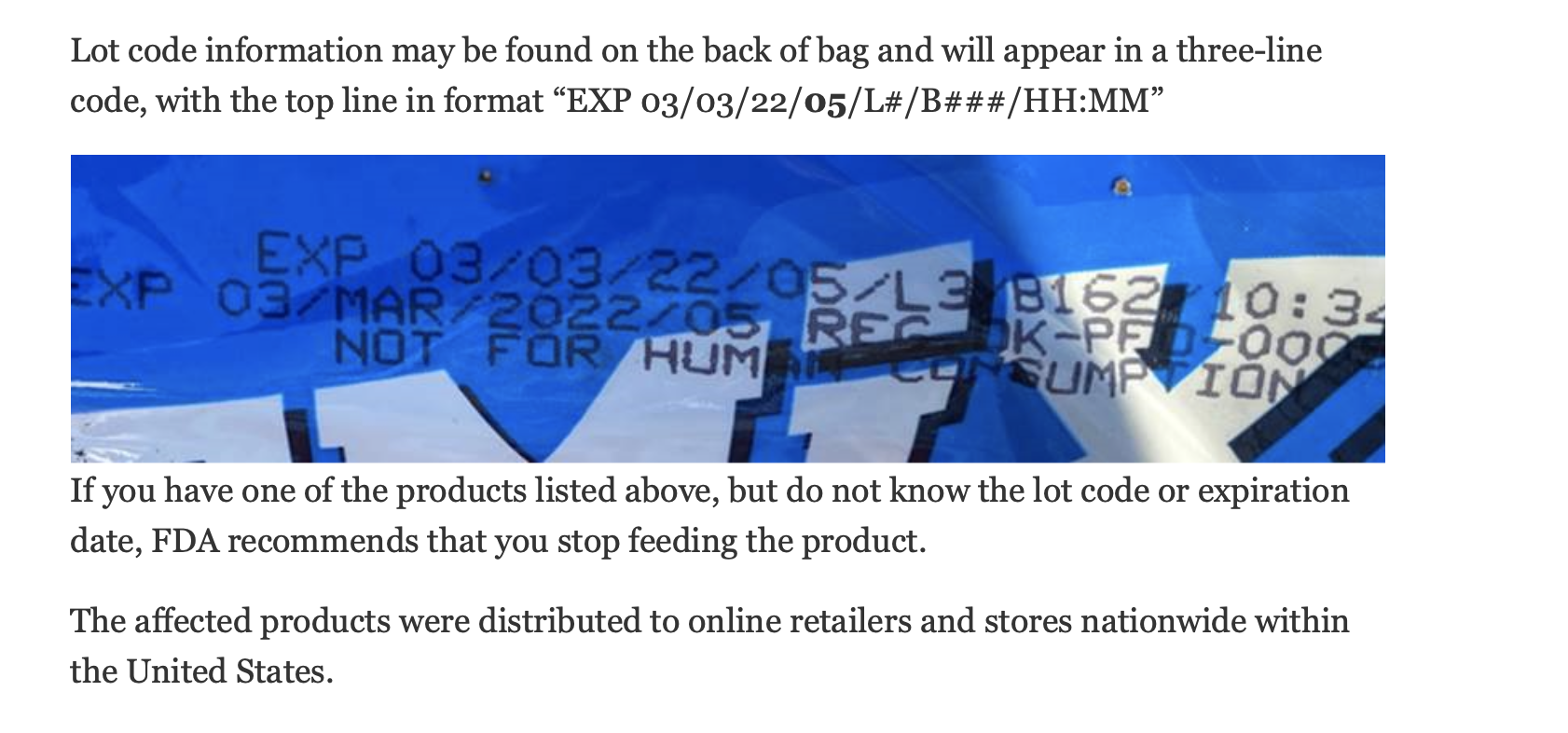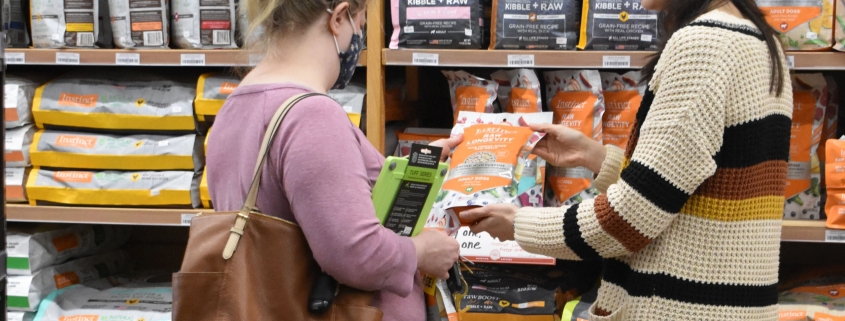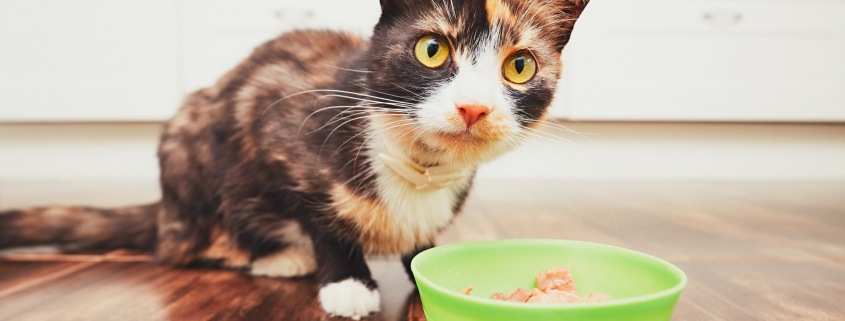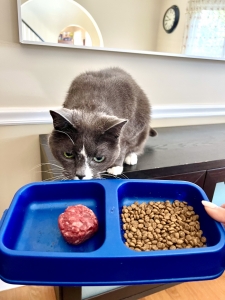Everything You Need to Know About Aflatoxin and Your Pet’s Food
Recalls due to aflatoxin contamination have resulted in the retrieval of hundreds of thousands of pounds of pet food. Tragically, these recalls have caused the loss of hundreds, and possibly thousands, of beloved pets. You might be wondering why such recalls continue to occur. The truth is that preventable measures can be implemented to avoid recalls associated with contaminants like aflatoxin.
When pets fall ill or pass away, it can be incredibly frustrating for pet parents and those involved in the pet industry. Aflatoxicosis is the term used to describe illness caused by aflatoxin. Diagnosing it can be challenging as the associated symptoms are considered ‘non-specific.’ In other words, they are vague and can overlap with those of various other diseases and conditions. As a pet owner, what essential information should you be aware of?
Let’s dive into the fundamentals:
What are Aflatoxins?
Aflatoxins, produced by fungi such as Aspergillus flavus and Aspergillus parasiticus, belong to a group of toxins that can be found on various agricultural crops including corn, rice, wheat, oats, peanuts, cottonseed, and tree nuts, among others. These toxins are particularly prevalent in warm and humid regions of the world and are permitted in both human and pet food at very low levels. However, the risk and level of contamination increase under specific temperature and moisture conditions.
Four types of aflatoxins, namely B1, B2, G1, and G2, have the potential to contaminate food. Among them, aflatoxin B1 is the most concerning due to its hepatotoxic nature, meaning it is toxic to the liver and can cause severe illness and even death in pets. Aflatoxicosis, often resulting from cumulative exposure to contaminated pet food, can worsen over time. Consequently, contaminated products may remain in circulation for weeks or even months before the source is identified, leading to a recall announcement.
Previous incidents in 2005 and 2012 witnessed multiple recalls of aflatoxin-contaminated pet food, resulting in numerous pets falling critically ill or losing their lives after consuming these products. More recently, Sunshine Mills in 2020 and Midwestern Pet Foods in 2021 faced extensive recalls due to the presence of deadly aflatoxin contamination.
What signs should I look for in my pet?
If you suspect your pet has consumed pet food contaminated with aflatoxin there are several signs you should watch for. Be sure to alert your veterinarian and seek medical attention for your pet should any of these signs develop.
Common Clinical Signs with Aflatoxicosis:
- Lethargy (sluggishness, tiredness, lack of excitement)
- Food Aversion or Anorexia (not wanting to eat)
- Vomiting, or vomiting blood
- Jaundice (yellow discoloration of the eyes, gums, or skin)
- Diarrhea or Melena (dark bloody stool, sometimes looks like coffee grounds)
Detecting Aflatoxicosis: Veterinary Tests and Symptom Recognition
Your veterinarian or emergency clinic will conduct various tests to assess the health of your pet. In many cases, liver function tests, which are part of a comprehensive blood chemistry panel, can provide valuable clues for detecting aflatoxicosis. Elevated liver values, such as ALT (alanine transaminase) and AST (aspartate transaminase), are often observed in the test results. Additionally, increased total bilirubin concentrations and prolonged prothrombin time (PPT) may also be indicative of aflatoxicosis.
Pet owners frequently notice changes in their pets’ behavior, food intake, or energy levels around the time these symptoms begin to manifest. It is crucial to inform your veterinarian about any such changes as they can provide essential insights. Even small details can contribute to a better understanding of the overall picture. It’s important to note that unlike humans, pets consume the same diet consistently, which results in faster toxin accumulation in their systems. Consequently, their bodies may have limited time and capacity for detoxification in such situations.
Mitigating Aflatoxin Contamination in Pet Food
Corn is widely recognized as a major contributor to aflatoxin contamination in pet food, making grain-free pet foods increasingly popular in recent years. However, it’s important to note that aflatoxin contamination is not limited to corn and remains a potential risk regardless of the type of pet food or its ingredients. To mitigate this risk, pet food manufacturers should diligently test all ingredients and final products for aflatoxin and other contaminants. Unfortunately, some manufacturers neglect this crucial step, leading to the presence of contaminated products in the market.
As a responsible pet owner, you can take action by contacting your pet food company or inquiring at the store where you purchase your pets’ food to ensure that the manufacturer implements adequate safety checks. Although safety checks are not currently mandated by law, contamination with aflatoxin would necessitate a product recall. Therefore, it is in the best interest of any pet food manufacturer to prioritize implementing rigorous safety measures.
Factors Influencing Pet Susceptibility to Aflatoxicosis
Remember that every pet, as well as every person, is unique, leading to various factors that can impact a pet’s susceptibility to aflatoxicosis and other conditions. These factors include genetics, age, hormonal status, nutritional status, exercise, and other underlying illnesses, all of which can influence the severity of aflatoxicosis. In essence, even if pets consume the same food, their reactions may differ.
Taking Action When Suspecting a Pet Food Recall
If you are feeding a currently recalled food, or if you suspect your pet may be exhibiting signs of aflatoxicosis:
- Contact your veterinarian immediately
- Save any remaining pet food you have
- Save pet food packaging and take pictures to document date and lot codes
- Bring the packaging and pet food to your veterinarian who can help you file a complaint with the FDA and send samples out for laboratory testing if needed
If you want to know more about the types of questions you should ask your pet food company you can click here.
About the Authors:
Morgan Hunt
Meet Morgan, a Veterinary Assistant/Technician at Branford Veterinary Hospital and a Pet Problem Solver at NorthPoint Pets & Company! She is a Certified Veterinary Technician. Her interests in the animal world are mainly behavior & nutrition. She has a Pit Mix named Tyson and a Dalmatian named Pongo who keep her on her toes learning more and more every day.
Nicole Cammack
Nicole is the founder & owner of award-winning NorthPoint Pets & Company, in Connecticut. She is also the Founder & CEO of Undogmatic Inc. Her undergraduate and graduate education includes biology, chemistry, business and nutrition. She has worked in the pharmaceutical industry on multiple R&D projects and has had the privilege to learn from leading international figures in the human and pet health industry. She regularly lectures at national conferences, including federal, state, and municipal K9 events. Her current research involves identifying pathogenic risk factors and transmission among raw fed pets through a comprehensive worldwide survey.

